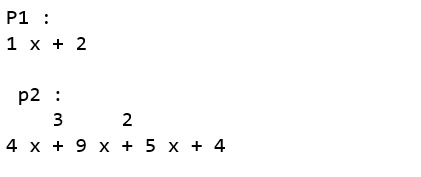numpy.polymul(p1,p2)方法計算兩個多項式的乘積,並返回兩個輸入多項式“ p1”和“ p2”相乘所得的多項式。
參數:
p1:[array_like or poly1D]Input polynomial 1.
p2:[array_like or poly1D]Input polynomial 2.返回: Polynomial resulting from multiplication of the inputs.
如果任一輸入為poly1D 對象,則輸出也是一個poly1D對象,否則,按降序排列的多項式係數的1D數組。
代碼:解釋polymul()的Python代碼
# Python code explaining
# numpy.polymul()
# importing libraries
import numpy as np
import pandas as pd
# Constructing polynomial
p1 = np.poly1d([1, 2])
p2 = np.poly1d([4, 9, 5, 4])
print ("P1:", p1)
print ("\n p2:\n", p2) 
mul = np.polymul(p2, p1)
print("\n\npoly1D object:")
print("Multiplication Result :\n", mul)
# Defining ndarray
x = np.array([1, 2])
y = np.array([4, 9, 5, 4])
mul = np.polymul(y, x)
print("\n1D array:")
print("Multiplication Result :", mul)
相關用法
注:本文由純淨天空篩選整理自Mohit Gupta_OMG 大神的英文原創作品 numpy.polymul() in Python。非經特殊聲明,原始代碼版權歸原作者所有,本譯文未經允許或授權,請勿轉載或複製。
